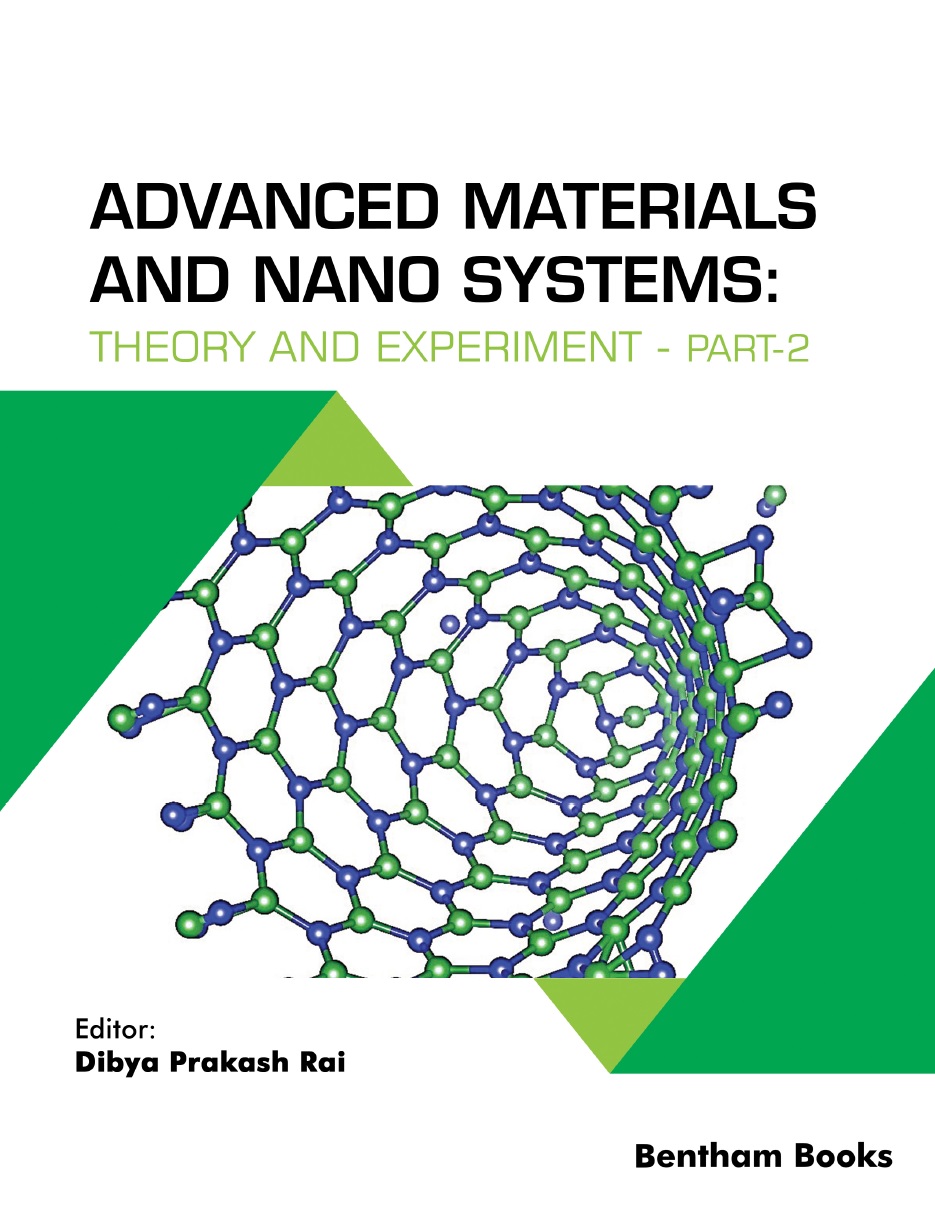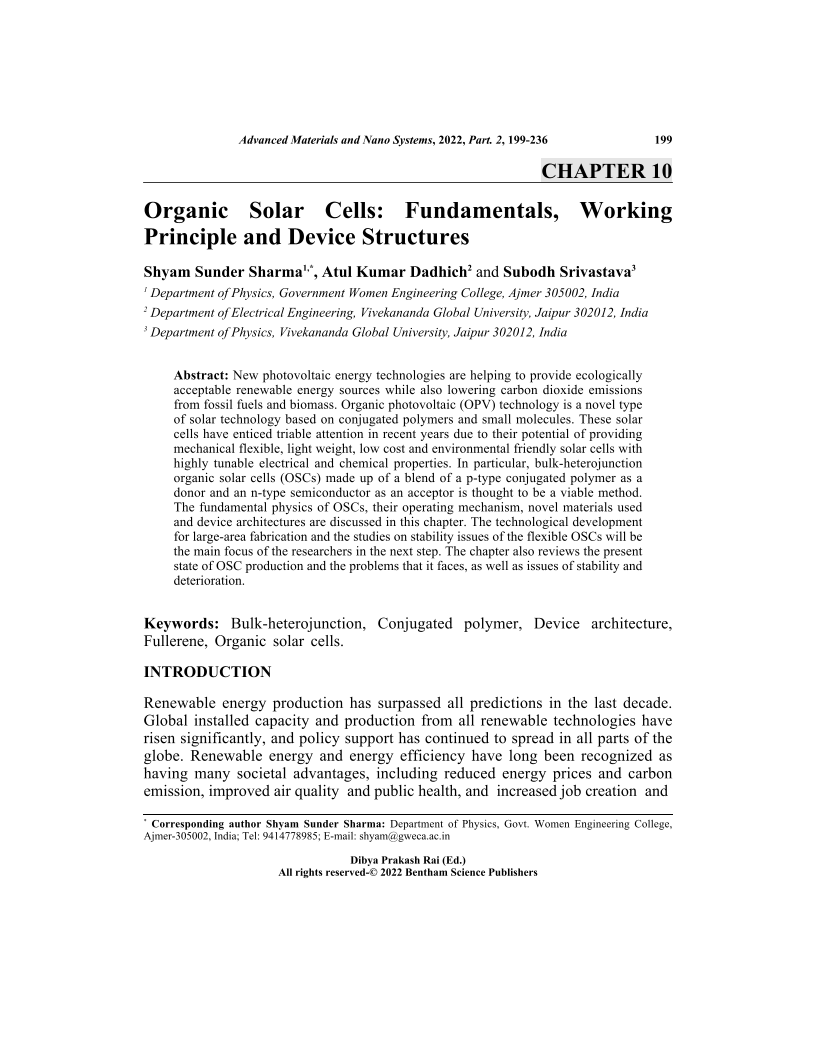Organic Solar Cells: Fundamentals, Working Principle and Device Structures

- Authors: Shyam Sunder Sharma1, Atul Kumar Dadhich2, Subodh Srivastava3
-
View Affiliations Hide Affiliations1 Department of Physics, Government Women Engineering College, Ajmer 305002, India 2 Department of Electrical Engineering, Vivekananda Global University, Jaipur 302012, India 3 Department of Physics, Vivekananda Global University, Jaipur 302012, India
- Source: Advanced Materials and Nanosystems: Theory and Experiment - Part 2 , pp 199-236
- Publication Date: September 2022
- Language: English
Organic Solar Cells: Fundamentals, Working Principle and Device Structures, Page 1 of 1
< Previous page | Next page > /docserver/preview/fulltext/9789815049961/chap10-1.gif
New photovoltaic energy technologies are helping to provide ecologically acceptable renewable energy sources while also lowering carbon dioxide emissions from fossil fuels and biomass. Organic photovoltaic (OPV) technology is a novel type of solar technology based on conjugated polymers and small molecules. These solar cells have enticed triable attention in recent years due to their potential of providing mechanical flexible, light weight, low cost and environmental friendly solar cells with highly tunable electrical and chemical properties. In particular, bulk-heterojunction organic solar cells (OSCs) made up of a blend of a p-type conjugated polymer as a donor and an n-type semiconductor as an acceptor is thought to be a viable method. The fundamental physics of OSCs, their operating mechanism, novel materials used and device architectures are discussed in this chapter. The technological development for large-area fabrication and the studies on stability issues of the flexible OSCs will be the main focus of the researchers in the next step. The chapter also reviews the present state of OSC production and the problems that it faces, as well as issues of stability and deterioration.
-
From This Site
/content/books/9789815049961.chap10dcterms_subject,pub_keyword-contentType:Journal -contentType:Figure -contentType:Table -contentType:SupplementaryData105

